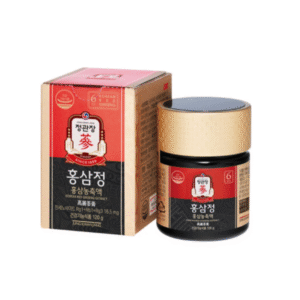🌿 Introduction
Modern life often brings convenience — yet at a cost.
Our plates have grown richer in flavor but poorer in balance. Hidden in the comfort of packaged foods lie silent disruptors of vascular health: sodium, refined sugar, and chemical additives that slowly shift how our bodies regulate blood pressure.
To care for the heart is to understand this delicate dance of minerals, hormones, and daily habits.
This is not about restriction, but restoration — returning to the rhythm our bodies were designed for.
1. Understanding the Modern Salt Dilemma
Salt, or sodium chloride, is essential — it helps conduct nerve impulses, contract muscles, and maintain fluid balance.
Yet the problem isn’t salt itself, but the sheer volume hidden in processed food.
More than 70% of sodium intake today comes not from what we sprinkle on meals, but from what’s already in them — breads, sauces, canned soups, snacks, instant foods.
Too much sodium increases water retention in the bloodstream, forcing the heart to pump harder. Over time, the blood vessel walls stiffen, setting the stage for hypertension.
🫀 Salt in excess turns nourishment into pressure.
To restore balance, the key is not total avoidance, but awareness. Choose whole foods, cook more often at home, and experiment with natural seasonings like herbs, lemon, or seaweed instead of table salt.
2. The Overlooked Role of Sugar in Blood Pressure
While salt often takes the blame, refined sugar quietly plays an equally harmful role.
High sugar intake increases insulin levels, promotes fat storage, and causes chronic inflammation — all of which raise blood pressure.
Fructose, especially from sweetened drinks and syrups, alters how kidneys handle sodium, making the body retain even more of it.
Recent studies reveal that excess sugar may have a stronger link to hypertension than salt in some populations.
🍯 Where sweetness lingers, tension often follows.
The antidote is not deprivation, but reconnection — enjoying sweetness from nature’s sources: fruits, root vegetables, and whole grains that come with fiber, minerals, and balance.
3. The Hidden Partnership: Salt, Sugar, and Processed Fat
Modern diets often combine all three — salt for taste, sugar for pleasure, and processed fat for texture.
This trio overstimulates the brain’s reward centers, making us crave more and disrupting hormonal signals like leptin and ghrelin that regulate hunger and fullness.
The result? Chronic overeating, metabolic strain, and rising blood pressure.
🌾 When flavor is engineered, balance is lost.
4. Rebuilding the Natural Palate
Your taste buds are adaptable. Within just two to three weeks of mindful eating, they begin to reset.
Reducing added salt and sugar doesn’t mean bland food — it means rediscovering the true flavor of ingredients.
Practical ways to retrain your palate:
- Add acidic contrast — lemon, vinegar, fermented foods — to enhance flavor naturally.
- Use aromatic herbs — basil, rosemary, cilantro, ginger — to stimulate freshness.
- Choose whole grains and legumes for steady, satisfying energy.
As your palate recalibrates, natural sweetness in a carrot or the gentle savor of steamed vegetables feels richer than any processed snack.
5. Potassium: The Forgotten Mineral of Balance
Where sodium contracts, potassium relaxes.
It helps the body excrete excess sodium through urine, balancing pressure and supporting muscle and nerve function.
Unfortunately, modern diets are often low in potassium — abundant in fresh produce but scarce in processed meals.
Best natural sources include bananas, avocados, spinach, sweet potatoes, tomatoes, and beans.
Adding these regularly helps create electrolyte harmony, easing strain on blood vessels.
🌿 Balance is not found in what we remove, but in what we restore.
6. A New Philosophy of Eating for the Heart
Heart health isn’t achieved by fear of food, but by respect for nourishment.
Instead of counting milligrams of sodium or grams of sugar, pay attention to how your meals make you feel.
Do you feel heavy or light after eating? Energized or sluggish? Calm or tense?
Your body speaks through these sensations — gentle indicators of whether your internal balance is intact.
Mindful eating, slow chewing, gratitude before meals — these small acts have measurable effects on digestion, hormones, and even blood pressure.
7. The Gentle Return to Wholeness
The path to balanced blood pressure is not a strict diet but a quiet revolution in daily choices.
Replacing one processed meal with a natural one.
Choosing water over soda.
Pausing before seasoning.
Each small choice lowers the internal noise that burdens the heart.
💫 Healing begins not in what you avoid, but in what you embrace — simplicity, awareness, and care.
Conclusion
In an era of excess, balance is the rarest luxury.
To eat for heart health is not to give up pleasure, but to rediscover it in its purest form — unprocessed, vibrant, and alive.
When salt, sugar, and fat return to harmony, so does your body.
The heart, ever grateful, beats quietly in rhythm with life itself.
🇰🇷 Premium Korean Ginseng Online Shop







